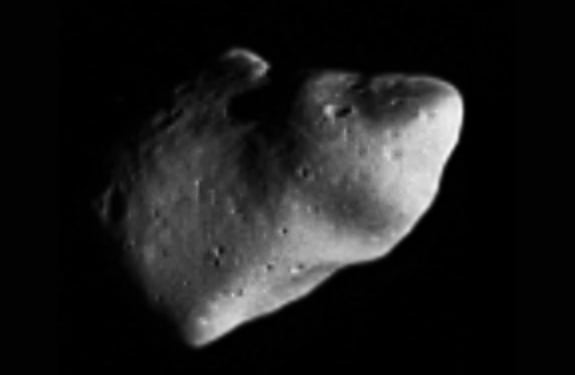A small asteroid will make a fairly close flyby of Earth tonight, November 16, 2010 at 10:44 p.m. EST (0344 GMT), but it is not a threat to hit the planet. Plus, at 3 meters wide, (10 ft) the asteroid, named 2010 WA, would break apart if it hit Earth's atmosphere. Still, finding and tracking the small asteroid is "good practice in detection," wrote NASA's @AsteroidWatch Twitter feed.
2010 WA will pass about 1/10 lunar distance, or about 38,000 kilometers (24,000 miles) away, and have a magnitude of about 14.5, so it won't be visible "without a good sized telescope" said @AsteroidWatch. But if you do have such a telescope, the asteroid could be seen over the middle to east coast of US.
For references, geostationary satellites are in orbit about 36,000 km (22,350 miles) up, while the International Space Station is about 350 km (220 miles) above Earth.
See more detailed information about
2010 WA on the Minor Planet Center Website
NASA is constantly on the lookout for asteroids, or Near Earth Objects (NEO), and has a mandate by Congress for the "Spaceguard" survey to find all asteroids around 40 meters and larger by 2020.
NASA says several teams of astronomers worldwide are surveying the sky to find NEOs. One of the most most productive NEO surveys is the LINEAR search program of the MIT Lincoln Lab, carried out in New Mexico with US Air Force and NASA support. The LINEAR team, which operates two search telescopes with one-meter aperture. Recently, the Catalina Sky Survey in Tucson, Arizona has been extremely productive, as well. Other active survey groups include the NEAT search program in Hawaii, carried out jointly by the NASA Jet Propulsion Lab and the US Air Force; the Spacewatch survey at the University of Arizona, and the LONEOS survey at Lowell Observatory in Flagstaff Arizona. Other astronomers -- many of them amateurs -- follow up the discoveries with supporting observations.
[caption id="attachment_79029" align="aligncenter" width="536" caption="Graph of NEO discoveries. Credit: NASA"]
[/caption]
To see more details on NEO discoveries,
see this page on the NASA's NEO website.
 Universe Today
Universe Today
